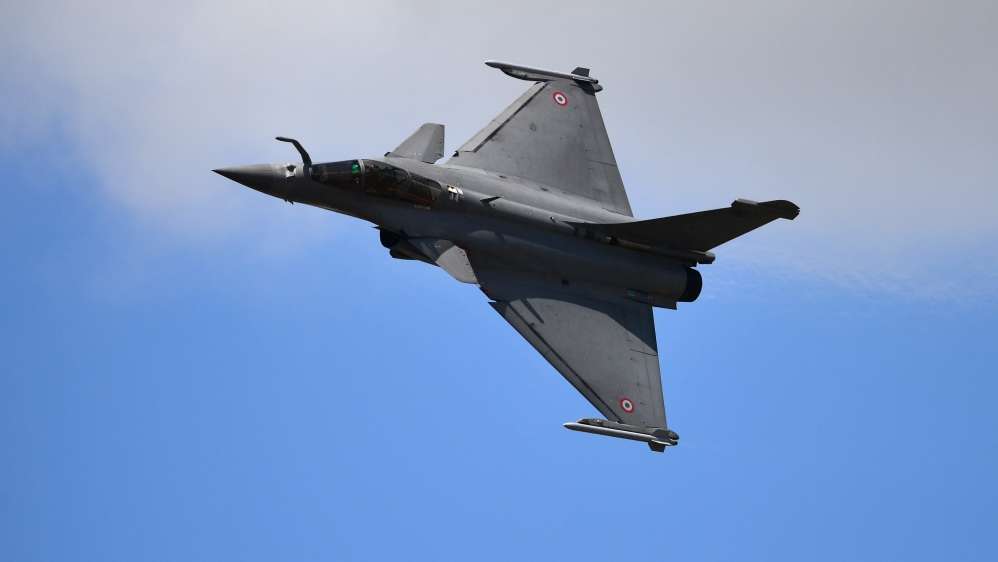
The operational commissioning (MSO) of the Rafale F3-R combat aircraft was decided by Admiral Pierre Vandier, the Navy Chief of Staff, and Air Force General Philippe Lavigne, Air Force and Space of Staff.
The modernization of combat aviation capabilities is one of the priorities of the Military Programming Law. As such, 2.7 billion euros are devoted, over the 2019-2025 period, to the development of the new Rafale standards.
With the authorization to use in operations all the capacities that are part of the F3-R standard, already equipping half of the fleet and intended to be installed on all Rafales in service, the French Navy and the Air Force and Space have an omni-role combat aircraft at the best world level, capable of operating in the most contested environments.
This decision applies in particular to the Rafale of the carrier air group currently deployed on board the Charles-de-Gaulle aircraft carrier, or those of the Air Force and Space operating from the forward operating base in Jordan as part of Operation Chammal.
This operational commissioning comes at the end of the development and distribution within the two services of the tactics for using the new capabilities of the omni-role aircraft allowed by this standard, in particular those provided by the METEOR long-range air-to-air missile and the TALIOS land target laser designator.
The pair formed by the AESA RBE2 radar and the METEOR long-range missile allows the Rafale to have air superiority whether it is to carry out strikes at all times in depth, to support troops on the ground or even the treatment of targets of opportunity.
This new version of the Rafale will continue to carry the Enhanced Medium Range Air-to-Ground Missile (ASMP-A) for airborne nuclear deterrence missions.
Now capable of using the high-resolution TALIOS laser designation pod, capable of producing images in both the visible and infrared domains, the Rafale F3-R will benefit from greatly improved capabilities to ensure intelligence, acquisition, tracking and target designation. In particular, the Rafale will have new improved capabilities for tracking more fixed or mobile targets, an automatic detection capability for moving targets, as well as a new man / machine interface to facilitate its use.
The Rafale F3-R standard will also ensure an improved ground attack capability. It will now be possible to manage ammunition flight time, laser illumination and in-flight weapon tuning, particularly for the laser guided AASM Air-to-Ground Modular Weapon.
It will also be safer thanks to an automatic ground collision avoidance system (AGCAS). It is an ultimate protective function designed to prevent the risk of collision with the ground.
From 2022, the Rafale will receive further new capabilities with the F4 standard. In particular, it will feature innovative connectivity solutions to optimize networked combat, improved radar and forward-looking optronics sensors, a helmet sight capability and new integrated weaponry, such as the Mica NG air-to-air missile and 1000 kg air-to-ground weapon.
SUMMARY OF CAPACITIES ASSOCIATED WITH THE RAFALE F3-R STANDAR
- Sustainability of the air superiority capacity with:
- the METEOR missile and a robust radar (also in a dense electronic warfare situation); Improved resilience against GPS jamming.
- an improved Spectra electronic warfare system;
- Acceleration of the decision-making loop and preservation of interoperability.
- Sustainability of the air superiority capacity with:
- the METEOR missile and a robust radar (also in a dense electronic warfare situation); Improved resilience against GPS jamming.
- an improved Spectra electronic warfare system; Acceleration of the decision-making loop and preservation of interoperability.
- a strengthened alert capacity vis-à-vis adverse threats. Improved ability to identify and designate targets on the ground with the integration of the new laser designation pod (TALIOS).
- Sustainability of in-flight refueling capacity by integrating a new generation receptacle (NARANG).
- Integration of the GBU16, 500 kg laser guided bomb.
- Improved flight safety with the integration of an automatic ground anti-collision system.
- Improved support system with faster and more accurate fault diagnosis.






Be the first to comment